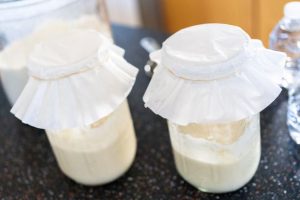STEM Activities for Primary Schools
There are plenty of opportunities for teachers and students to take part in Tyndall’s activities such as requesting classroom workshops or accessing our free downloadable resources. Our activities aim to improve teachers and their students’ content knowledge in areas such as physics, chemistry, electronics and photonics. We have developed STEM activities for primary schools that encourage students to investigate fascinating scientific concepts such as electronics and light.
Classroom Visits
If you would like us to visit your class please submit a request here. Visits are subject to availability and are limited.
Workshops
Introduction to Electronics – Paper Circuit Activity
This activity is an interactive workshop for students in 4th – 6th class. It consists of a short 15 – 20 minute presentation followed by a 30 minute hands on activity. Students will be introduced to electricity, electronics, new terminology and key pieces that are required to make a circuit work. They will have the opportunity to create a fully functioning paper circuit card out of copper tape, a coin cell battery and a LED (Light Emitting Diode).
Secrets of Rainbows
Do you know what white light is made of? During this activity, students will learn about light and will get the opportunity to create their own spectroscope, a device that breaks up white light into the colours of the rainbow. This activity is suitable for students in 4th – 6th class and will last approximately 30 – 40 minutes. It is available in English, Irish, Spanish Galician, Italian, German, Persian, Chinese and French. The workshop will be facilitated by researchers from the Irish Photonic Integration Centre (IPIC).
Science at Home
Tyndall 200
#Tyndall200 is a national celebration to mark the bicentennial of John Tyndall, one of Ireland’s most extraordinary and influential scientists. Chosen as the namesake of Tyndall National Institute, his scientific legacy continues to live on through our researchers and their work to this day.
Renowned for his scientific discoveries, John Tyndall was also a gifted teacher and delivered scientific lectures to the public at the prestigious Royal Institution. In honour of his contribution to research excellence and to share his love of science, we’ve launched a series of Tyndall-inspired science experiments that both you and your kids can enjoy from the comfort of your own home.
Here’s what you need to do:
- Watch the 4 quick videos to get inspired!
- Download the experiment guide of your favourite video
- Have fun doing the experiment!
Disappearing Coin: 5+ Years
Make a coin disappear in this science magic trick using only a glass of water and natural sunlight. You won’t believe your eyes!
Greenhouse in a Jar: 8-12 Year Olds
Have you ever wondered why the earth is heating up? Create your own greenhouse in a jar to explore climate change and find out.
The Tyndall Effect: 5+ Years
Create cool light effects in a jar of water and milk and learn about how beams of light navigate through different liquids.
Magnetic Force with a Metal Can: 8-18 Year Olds
Create your own magnetic force and make an ordinary, non-magnetic aluminium can do your bidding through the power of electrons.
Science of Sourdough: 8-12 Year Olds
Discover the world of micro-organisms with this experiment. Grow your own sourdough starter and discover what’s living in the air around you and what that means for your new pet sourdough!.
